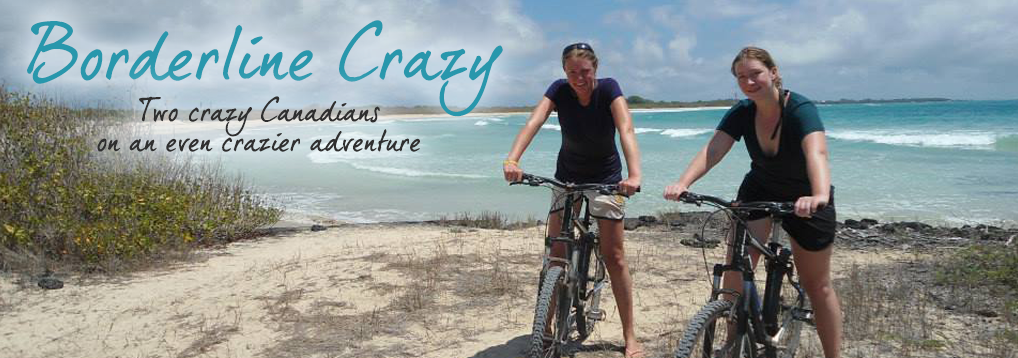So, you’ve just graduated University, quit your job, have an inordinate amount of holidays, or just very itchy feet. Whatever the case, you’re ready to travel, for a while. This is definitely not a guide for every type of traveler, but is what Marieke and I tend to do, with a focus on our upcoming backpacking trip.
Decide where you want to go. The parameters for us this year were somewhere: we both hadn’t been, could spend two months or longer, not too crazy a time change, decent internet, not crazy expensive, not too cold (I only have December and January off work). And somewhere we really wanted to go of course!
The first condition actually eliminated quite a few countries, but pretty soon we settled on one we are both stoked about: Argentina. It also offers the bonus of bordering Bolivia, another country Marieke can explore when I head home to be a responsible adult. Figure out what conditions are important for you before selecting a destination.
Buy a guide book. Not just any guide book, do your research before you go. I tend to like the format of Lonely Planet (often referred to as a backpacker’s bible), but it’s worth looking at other options. I ordered Footprint for Argentina after really liking the Colombia version. Footprint has a pretty good reputation of accuracy in South America. These days, I tend to look at the four main backpacking guidebook brands (Rough Guide, Lonely Planet, Footprint and Moon) and see which one has been updated the most recently. Especially in countries that have more volatile economic systems, a two years old edition can feel ancient, particularly when budgeting based on the guide. The other big decision with guidebooks is if you’re looking for a very local one for a city, or a larger one covering a country, or even a continent. Ones covering a continent are super useful if you’re planning on doing more than one country (it can be hard to find guidebooks while on the road), but can be bulky and tend to be less detailed than individual country ones.
Note: we tend to use guidebooks as excellent resources for deciding where to go, which routes to take, approximate bus length times, but avoid using their accommodation and restaurant recommendations, as these tend to either be too popular for their own good. Meaning they are either full, or now overpriced or let go due to their new found star status.
Figure out where you want to fly in and out of. And where you want to fly through. The first consideration is obviously price. I once took a 40 flight including layovers to New Zealand to save a couple hundred dollars. I wouldn’t do it now, but when travelling you can either pay in time or money. Time I had, money I didn’t. Looking at Argentina, the obvious city to fly into was Buenos Aires, which unsurprisingly was also the cheapest. It also made sense for us to fly out of there, as we could do a loop around the country and end up back there. In other countries, it would probably make more sense to fly out of a different city. Or take an internal flight back to where you started.
With a layover inevitable flying from either Vancouver or St. Johns (NL) to Buenos Aires, Marieke and I both decided on stopping a few days in Toronto. It gives us both a chance to visit friends, avoid crazy American airport security, and fly together to Buenos Aires, making an easier start to the trip. And in Marieke’s case, the chance to grab a few last minute supplies which are unavailable in Newfoundland, which still does not have a MEC store.
Get travel insurance. If you’re also getting trip cancellation insurance, get this as soon as you book your flight, in case you end up having to change or cancel your flight at any point in time. The two biggest factors I’ve noticed in choosing travel insurance plans are if you’re also going to the United States, it’s going to cost a lot more (I have an annual plan to cover up to two weeks in the country), and whether or not more than just medical coverage. In my younger, more thrifty days, I used to opt for just medical coverage, forgoing the trip cancellation and lost baggage insurance, but I got both of these for Argentina, as I’m now a (cough) responsible adult and the gear I’m bringing is worth a lot more than on previous trips. And last year I ended up having to come home a bit early, and it’s not cheap to change plane tickets. There are a lot of other considerations to make when getting travel insurance, including what your credit card may already offer, but those are the big ones for me. The best advice anyone has ever given me on insurance is: in a worst case scenario, how much would it cost you to recover, and how much of that can you afford? For example, if you lost all your baggage, how much would it cost you to replace it all? Compare that cost to the price of the insurance and make a decision.
These tips are just scratching the surface and are meant to point you in the right direction. The number one thing to keep in mind is that there is a difference between traveling and vacationing. The first requires quite a bit of work, but getting the fundamentals of travel right means that you can have lots of fun along the way.





